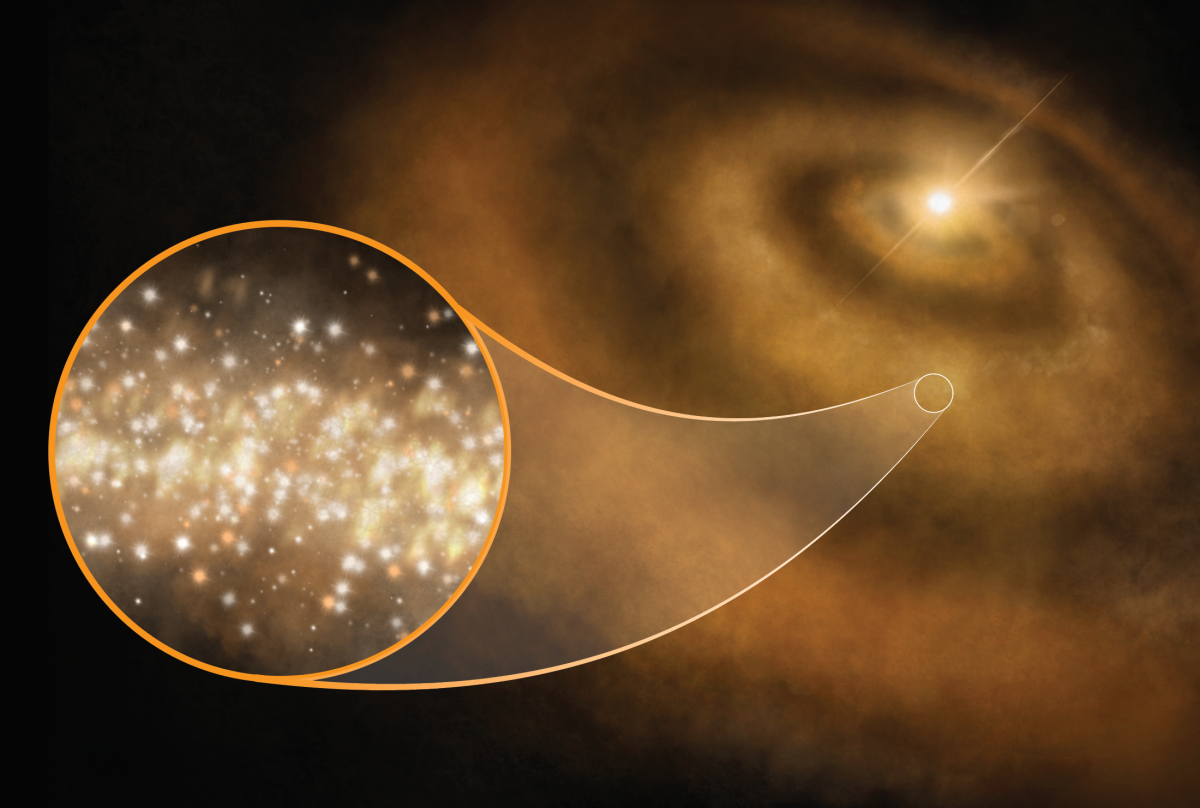
Tiny hydrogenated diamonds swirling around infant stars could be the source of strange microwave signals emanating through our galaxy.
The research, published this week in Nature Astronomy, potentially solves a mystery more than two decades in the making.
Scientists probing the cosmic microwave background radiation—an ancient relic of the Big Bang—first noticed a weird signal in the Milky Way about 20 years ago. It was dubbed "anomalous microwave radiation" (AME), and astronomers have puzzled over its source ever since.
Researchers figured out that small, spinning grains were to blame for the strange microwave light. But exactly what makes up these nanoparticles has remained a mystery.

Scientists used the Green Bank Telescope in West Virginia and the Australia Telescope Compact Array to probe 14 young star systems. They spied AME emanating from three of them: V892 Tau, HD 97048 and MWC 297.
"This is the first clear detection of anomalous microwave emission coming from protoplanetary disks," said David Frayer, a co-author on the paper and an astronomer with the Green Bank Observatory, in a statement.
Read more: Alien-hunting Breakthrough Listen launches new survey of millions of stars
Infrared signals beaming from these three AME-positive systems perfectly matched that of nanoscale diamonds. In fact, they are the only systems known to host the miniature jewels.
Previously, scientists though a group of organic molecules called polycyclic aromatic hydrocarbons might be to blame for AMEs. These molecules are abundant throughout the universe and have distinctive infrared fingerprints. But scientists have found evidence of polycyclic aromatic hydrocarbons in systems with no AME signal at all.
"In a Sherlock Holmes-like method of eliminating all other causes, we can confidently say the best candidate capable of producing this microwave glow is the presence of nanodiamonds around these newly formed stars," Jane Greaves, an astronomer at Cardiff University in Wales and lead author of the study, said in the statement.
Statistical modeling supported the team's conclusions. There is a one in 10,000 chance, Frayer said, that the link between AME and the infrared nanodiamond signal is just down to chance.
Large volumes of these nanodiamonds spin around certain young stars, the team posited, emitting the weird signals. The tiny gems can even find their way to Earth inside meteorites.
Read more: Dark matter should be everywhere, but this mysterious galaxy has none
The "cool and unexpected" result, Greaves said, "sheds light on the chemical features of early solar systems, including our own."
Brian Mason, an astronomer at the National Radio Astronomy Observatory and co-author on the paper, added in the statement: "This means that astronomers can now make better models of the foreground microwave light from our galaxy, which must be removed to study the distant afterglow of the Big Bang."
Uncommon Knowledge
Newsweek is committed to challenging conventional wisdom and finding connections in the search for common ground.
Newsweek is committed to challenging conventional wisdom and finding connections in the search for common ground.
About the writer
Katherine Hignett is a reporter based in London. She currently covers current affairs, health and science. Prior to joining Newsweek ... Read more
To read how Newsweek uses AI as a newsroom tool, Click here.








